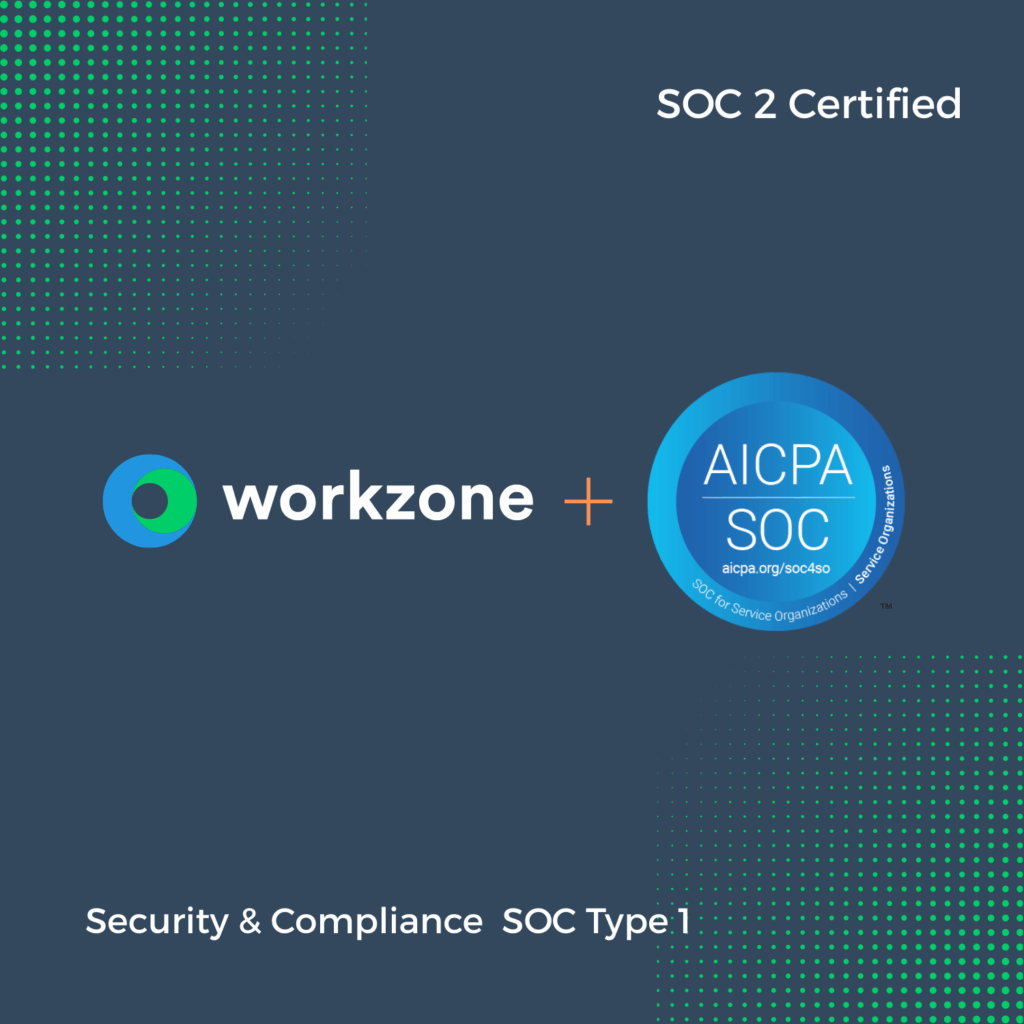Why Project Management for Financial Services Teams Requires More Than Just Task Tracking

Is Task Tracking Enough for Financial Services Teams?
The financial services industry operates in a high-stakes, highly regulated environment where precision, compliance, and risk management are paramount. From banks and credit unions to insurance firms and investment companies, teams are juggling regulatory projects, multi-location marketing initiatives, IT system upgrades, and operational improvements—all with tight deadlines and strict compliance requirements.
Basic task tracking tools might help with simple to-do lists and assignments, but they fall short in managing the complexity of financial services projects. Institutions need robust project management for financial services to handle risk, compliance, stakeholder collaboration, and multi-department workflows effectively. Without the right system in place, financial organizations risk inefficiencies, compliance failures, and missed deadlines that could lead to major financial and reputational damage.
Let’s explore why financial services teams need more than just task tracking and how the right project management solution can drive efficiency, compliance, and strategic growth.

The Limitations of Basic Task Tracking in Financial Services
Most financial institutions start with spreadsheets or simple task-tracking tools, but as projects grow in complexity, these systems become inadequate. Here’s why:
1️⃣ No Built-in Compliance Tracking
Financial services teams must comply with strict regulatory standards like SOX (Sarbanes-Oxley), GDPR, PCI-DSS, and FINRA regulations. Basic task-tracking tools don’t offer compliance tracking, audit trails, or document control—leaving teams vulnerable to errors and regulatory risks.
Risk: Missed compliance deadlines, regulatory penalties, or audit failures.
✅ Solution: A project management system that includes compliance checklists, approval workflows, and audit trails to ensure full regulatory adherence.
2️⃣ Lack of Risk Management Capabilities
Financial institutions must proactively assess and mitigate risks across projects, whether it’s cybersecurity threats, operational risks, or market fluctuations. Basic task trackers don’t offer risk assessment frameworks or forecasting tools.
Risk: No visibility into project risks, leading to unexpected issues and costly mistakes.
✅ Solution: Advanced project management platforms provide risk assessment dashboards, automated alerts, and contingency planning tools.
3️⃣ Poor Stakeholder Coordination Across Departments & Locations
Financial services projects often involve multiple stakeholders across departments and regions. A single project could require input from compliance officers, legal teams, marketing, IT, and branch managers. Basic task-tracking software lacks collaboration tools, approval workflows, and centralized communication features.
Risk: Confusion, approval delays, and project bottlenecks.
✅ Solution: A structured project management system ensures real-time updates, shared workspaces, and automated approvals to streamline multi-team collaboration.
The Necessity of Comprehensive Project Management for Financial Services
To keep up with growing regulations, increasing cyber threats, and expanding customer expectations, financial services teams need a strategic approach to project management. Here are four must-have capabilities beyond simple task tracking:
1️⃣ Regulatory Compliance & Audit-Ready Workflows
Financial regulations are constantly evolving. A single missed deadline could result in hefty fines, legal action, or reputational damage.
A compliance-driven project management system includes pre-built workflows for approvals, audit trails, and automated reminders for regulatory deadlines.
Example: A credit union managing an annual compliance audit can set up approval workflows for documentation, track policy updates, and store all regulatory paperwork in one place—eliminating last-minute scrambling.
2️⃣ Risk Mitigation & Business Continuity Planning
The financial industry faces high levels of risk—cyber threats, operational disruptions, or regulatory changes can impact business continuity.
Task trackers don’t offer risk forecasting or mitigation tools, making it hard to spot red flags before they become crises.
Example: A bank rolling out a new loan processing system needs a structured risk assessment workflow to identify potential fraud risks, compliance gaps, and system failures before launch.
3️⃣ Multi-Department & Multi-Location Collaboration
Financial institutions are spread across multiple branches and departments, making cross-team collaboration crucial.
Basic task-tracking tools don’t integrate real-time status updates, file sharing, or centralized communication.
Example: A marketing team at a financial services firm needs to coordinate a nationwide rebranding campaign—without a centralized project management system, approvals are delayed, print materials are outdated, and local branches struggle with execution.
4️⃣ Advanced Reporting & Data-Driven Decision-Making
Financial services projects involve millions of dollars in investments—leaders need real-time visibility into project performance, costs, and risk factors.
Simple task trackers lack advanced reporting, budget tracking, and forecasting tools.
Example: A private equity firm evaluating multiple investment projects needs a dashboard displaying cost analysis, risk factors, and timeline forecasts to make data-driven decisions.
Case Studies Highlighting the Need for Advanced Project Management
Incident Overview
In January 2025, Barclays, one of the largest banks in the UK, experienced a major IT outage that lasted for three days. This system failure disrupted more than 50% of payments, affecting millions of customers who couldn’t access their funds, make transactions, or pay bills. The crisis quickly escalated, leading to widespread public backlash, regulatory scrutiny, and financial losses.
What Went Wrong?
The outage was caused by a failed IT infrastructure upgrade that was not properly tested or monitored. The lack of a structured project management framework meant that the risks associated with the upgrade were not fully assessed, leading to:
- Inadequate testing protocols before deployment
- Poor risk assessment and mitigation planning
- Lack of contingency planning to quickly restore services
- Failure to involve key stakeholders in decision-making
The Consequences
Regulatory Scrutiny: Barclays faced an investigation from financial regulators due to compliance failures.
Financial Impact: The bank had to compensate affected customers, with potential payouts reaching £7.5 million.
Reputational Damage: The incident eroded customer trust, leading to account closures and a decline in new customer acquisition.
How Advanced Project Management Could Have Prevented This
With a robust project management system in place, Barclays could have avoided this crisis by:
✅ Implementing risk assessment workflows before making system changes
✅ Using compliance-tracking tools to ensure regulatory oversight
✅ Setting up real-time monitoring dashboards to detect issues early
✅ Creating contingency plans for rapid service recovery
ASX’s CHESS Replacement Failure
Incident Overview
The Australian Securities Exchange (ASX) embarked on a multi-year project to replace its Clearing House Electronic Subregister System (CHESS)—a crucial infrastructure for the Australian financial market. However, after years of delays and technical failures, the project was scrapped in late 2024, resulting in a staggering $255 million write-off.
What Went Wrong?
Despite the high stakes, ASX failed to implement structured project governance, leading to:
- Unclear project scope and shifting requirements
- Lack of stakeholder alignment between ASX, regulatory bodies, and market participants
- Insufficient testing and quality assurance before rollout
- Failure to meet deadlines, leading to repeated delays
The Consequences
$255 million in sunk costs from a failed initiative
Regulatory fallout, as market participants demanded accountability
Market instability, with investors losing confidence in ASX’s ability to manage critical infrastructure
How Advanced Project Management Could Have Prevented This
A structured project management system would have helped ASX:
✅ Establish clear project milestones and scope management
✅ Implement risk tracking dashboards to prevent avoidable failures
✅ Improve cross-stakeholder collaboration to align expectations
✅ Use agile methodologies to test and adapt instead of relying on a rigid plan
Work Smarter with Workzone: A Project Management Solution Built for Financial Services
Financial services teams need more than just task tracking—they need a structured, compliant, and scalable project management solution.
Workzone provides:
✅ Regulatory compliance workflows to ensure audit readiness
✅ Risk assessment tools to mitigate project disruptions
✅ Multi-location collaboration features to streamline communication
✅ Advanced reporting dashboards to drive better financial decisions
Workzone is trusted by financial institutions to manage complex projects, meet regulatory deadlines, and enhance team collaboration. See it in action today!
Last updated on June 11, 2025




